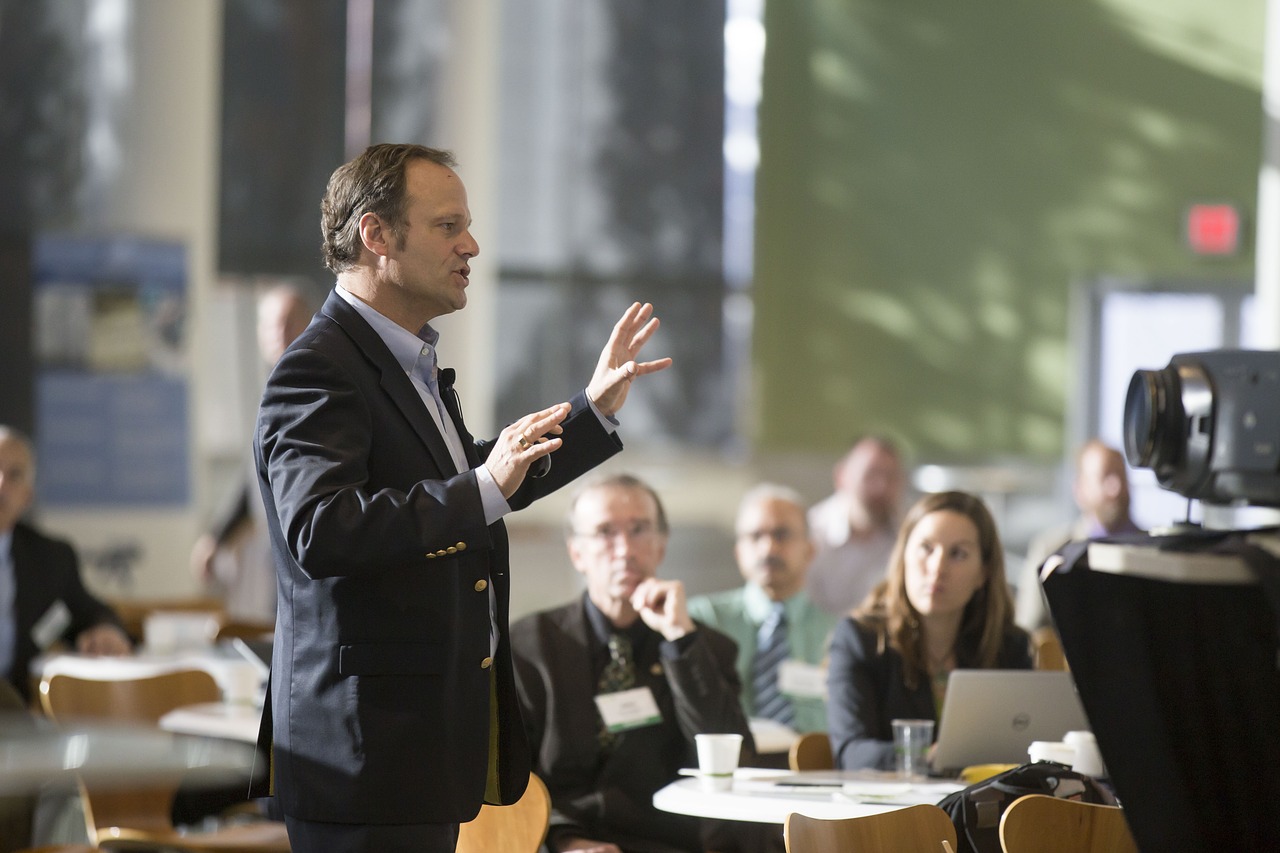So far in our TED Talk series, we’ve talked stage presence and visual aids. But there’s one more very important element you should consider – hand gestures.
It seems we never think about our hands and how we move them, until we’re on stage with an audience to entertain.

What you do with your hands depends on the stage setup, so here are 3 easy-to-follow “if/then” guidelines for your next TED Talk-style presentation:
#1 — If you’re given a handheld or lavalier mic…
…use hand gestures. This situation gives you the most freedom, so take advantage. And when you’re not gesturing, keep your hands at your sides.
#2 — If you’re standing behind a podium…
…don’t white knuckle the podium. There is a tendency to grasp the sides of the podium simply because it’s in front of you. Even if you’re behind a podium, you can use hand gestures. Though the audience won’t see most of them, the movement adds energy to your presentation.
#3 — If you’re someone who doesn’t gesture with their hands…
…your TED Talk-style presentation is not the time to start. We want you to be authentic on stage, which means you can’t incorporate new behaviors just because you think it’s the right thing to do. So, if you’re someone who doesn’t use hand gestures, keep your hands at your sides. DO NOT awkwardly grasp your hands in front of or behind you.
Before we sign-off, let’s take a minute to consider appropriate hand gestures for the stage and screen. Our recommendations are simple:
- Don’t point.
- Don’t chop.
- Don’t illustrate.
You want your hand gestures to give your presentation energy and not detract from your message. Pointing separates you from the audience and seems condescending; chopping is harsh and uninviting; illustrating your point with your hands is a distraction.
Instead, think small, circular movement at waist-level. Doing so invites the audience to be part of your presentation.









